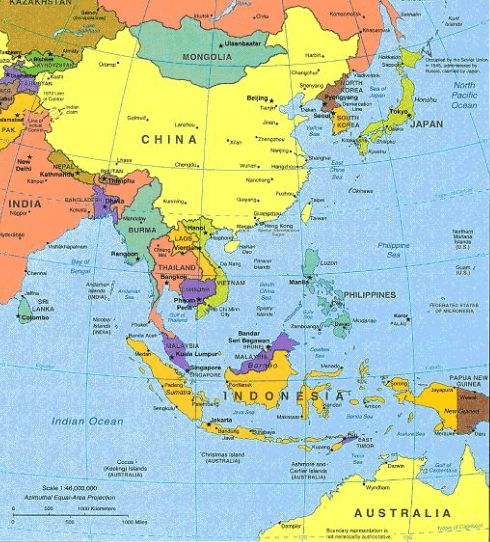The tensions between China and Australia have grown in recent years on various levels; Why has this been?
This article will address two explanations of it. One from the China Center for International Studies (CIIS) and the other from the US Congress.
Relations between China and Australia
The following is part of an article about the CIIS:
China and Australia are important countries in the Asia-Pacific region. A healthy and stable relationship between China and Australia is not only in line with the fundamental interests of the two peoples, but is also conducive to peace and development in the Asia-Pacific region and the world.
Since the establishment of diplomatic relations in 1972, China-Australia relations have generally developed smoothly.
In the political field, the leaders of the two countries have exchanged frequent visits and exchanges at all levels are close.
During President Xi Jinping‘s visit to Australia in 2014, the two sides announced that their relations will be upgraded to a comprehensive strategic partnership, fully reflecting the importance and expectations of the leaders of the two countries for China-Australia relations.
In the field of economics and trade, China has been Australia’s largest trading partner, the largest export market and the largest source of imports for many years.
After the China-Australia Free Trade Agreement came into force in 2015, the economic and trade cooperation between the two countries has moved to a higher level and in broader areas.
At the same time, Chinese students and tourists have become a major growth point for the Australian economy.
The development of Sino-Australian relations fully demonstrates that China’s development is an opportunity and not a threat to Australia.
The essence of Sino-Australian relations is mutual benefit and win-win results.
Tensions
However, in recent years, some people in Australia have viewed China’s development as a threat and have repeatedly provoked China on China-related matters, leading to a continued deterioration in Sino-Australian relations.
Starting in the second half of 2017, the Australian national media and some politicians have successively promoted China’s so-called political “influence” and “infiltration” in Australia without any evidence, causing damage to the environment for the development of communities. relations between the two countries.
In August 2018, Australia banned Huawei and ZTE from participating in local 5G construction on national security grounds, which had a bad influence on the international scene.
Also, the Australian government rejected more than 10 Chinese investment projects in Australia on the grounds of «national security» and «national interest» in Australia.
In April 2020, when the new corona pneumonia epidemic was sweeping the world, the Australian government unreasonably requested an independent investigation of China’s response to the new corona pneumonia epidemic and engaged in political manipulation of the epidemic, which seriously interfered with international cooperation in epidemic prevention and control.
In July 2020, Australia ignored the facts about the South China Sea issue and followed the United States in denying China’s sovereignty and maritime rights in the South China Sea.
Covid-19
These actions by Australia violated the basic principles of the normal development of China-Australia relations, undermined long-term mutual political trust between the two countries, and caused China-Australia relations to deviate from the correct path of development.
The development of bilateral relations follows the trend of the time and is in line with the fundamental interests of both parties. As long as this foundation remains unchanged, Sino-Australian relations will always see the light of day and return to the right path of healthy development.
This is an excerpt from an analysis of the US Congress
In new strategic documents, Australia has outlined plans to increase its defense spending, acquire key combat systems and further develop defense and strategic ties and bilateral relations with Japan, India, the Southwest Pacific states and others in the region. , at the same time that they seek to maintain and strengthen their alliance relationship with the United States.
Some have described these changes as the most significant changes in Australia’s strategic posture in a generation.
The U.S. shift toward alliances and the Indo-Pacific region under President Donald Trump and the mounting tensions in Australia’s bilateral relations with China appear to be key drivers of Australia’s efforts to develop and improve. your strategic posture.
While Australia seeks to deepen its alliance with the United States, its steps towards developing its own defense capabilities and its efforts to develop strategic relationships with others imply growing uncertainty about over-reliance on its American ally.
While tensions between Australia and China have been mounting since 2015, they have become particularly acute following Australia’s May 2020 call for research into the origins of the coronavirus pandemic.
Edges and relations between China and Australia
- Key points of tension in the Australia-China bilateral relationship include:
- China’s restrictions on some Australian imports.
- Australia’s opposition to Chinese efforts to control the South China Sea.
- Chinese cyberattacks against Australia.
- China’s apparent attempt to influence Australian politicians.
- China’s efforts to develop a Belt and Road Initiative (BRI) agreement with the state of Victoria despite the Australian federal government’s decision not to sign the BRI
- Perceived Chinese efforts to restrict academic freedom in Australian universities.
- Australia’s support for a political solution that respects Hong Kong’s freedoms.
- The investigation and arrest of members of the Australian media in China.
Details of Australia’s anticipated changes to its strategic posture and defense policy are most recently articulated in Australia’s 2020 Defense Strategic Update, the 2020 Force Structure Plan and in the latest speeches by Prime Minister Scott Morrison.
Morrison has compared the economic and strategic uncertainty of the present to the «existential threat» Australia faced when the global and regional order collapsed in the 1930s and 1940s.
The 2020 Strategic Defense Update warns that Australia «must be better prepared for the prospect of high intensity conflict.»
![]()

